Negative bad AHG or no AHG added d. Cold agglutinin disease CAD is a type of autoimmune hemolytic anemia that typically becomes apparent at 50 to 60 years of age.

Cold Agglutinin Disease And Hemolytic Crisis After Hypothermic Circulatory Arrest In A Patient With Beta Thalassemia Minor Journal Of Cardiothoracic And Vascular Anesthesia
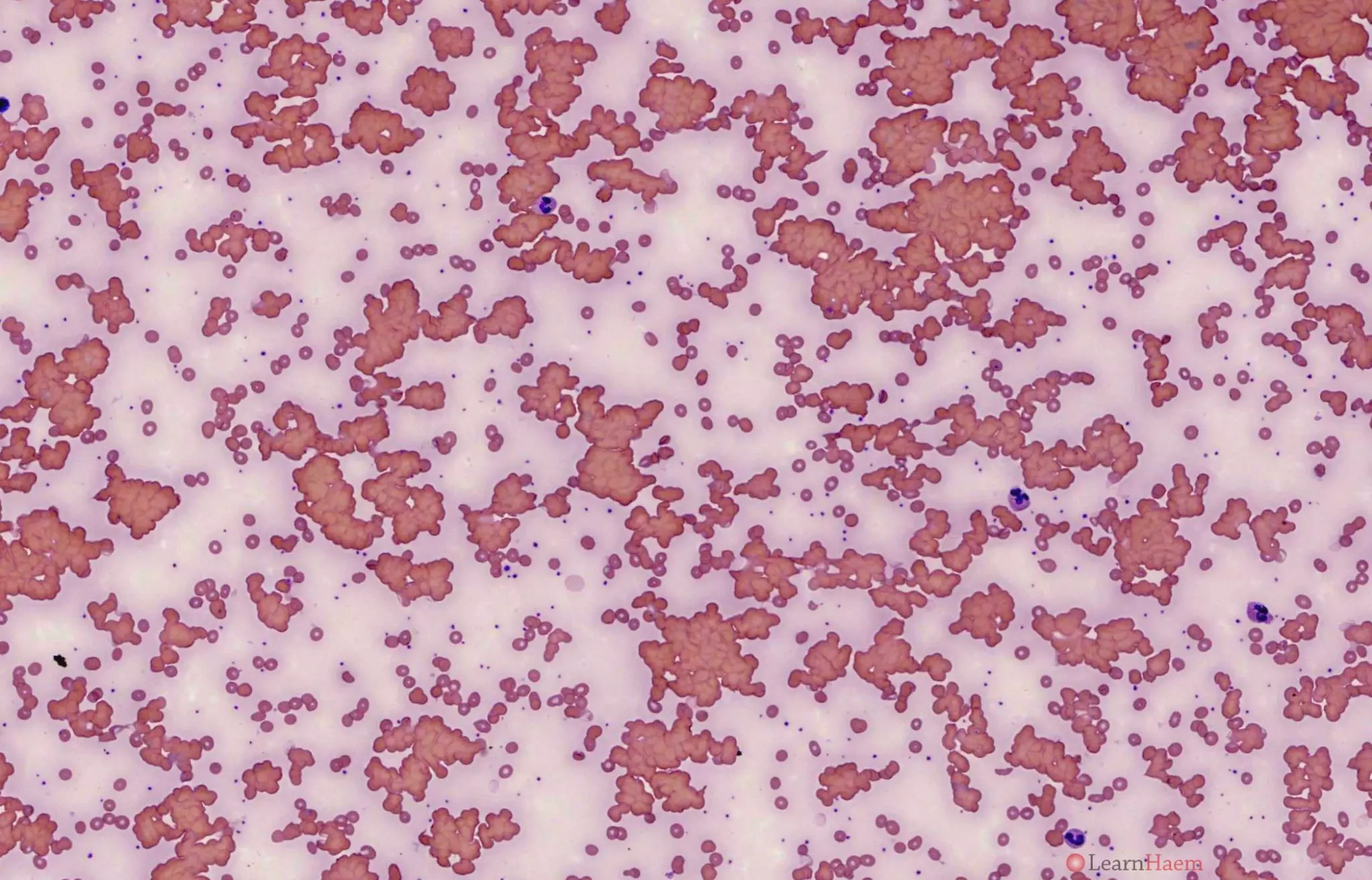
Cold Agglutinin Disease Learnhaem Haematology Made Simple
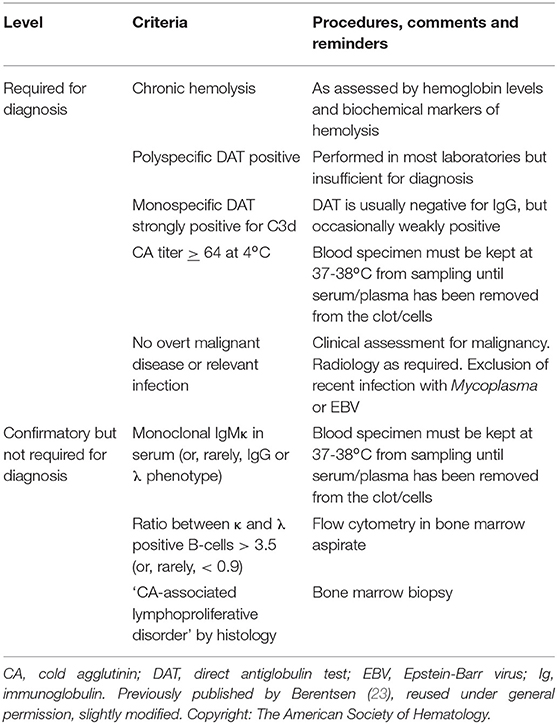
Frontiers New Insights In The Pathogenesis And Therapy Of Cold Agglutinin Mediated Autoimmune Hemolytic Anemia Immunology
Symptoms of cold agglutinin disease are similar to those seen in WAHA as hemolysis and anemia are also present.

Igm cold agglutinin. The IgM cold agglutinin binds to its cognate antigen usually I or i on the surface of RBCs in sites of the body where the temperature is low enough to be in the thermal range of the antibody eg acral areas especially with cold ambient temperatures. IgG-sensitized RBCs Coombs control check cells a. Have less than 10 of nucleated bone marrow cells with the lymphoplasmacytic morphology and have no symptoms or findings of end organ dysfunction attributed to Waldenströms macroglobulinemia such as anemia decreases in any white blood cell count cold agglutinin disease hyperviscosity of.
Cold agglutinin disease CAD has a prevalence of 5 to 20 cases per million and an incidence of 05 to 19 cases per million per year showing considerable variation with climate. 24 Cold agglutinin. Cold-active antibodies Cold agglutinin disease CAD Primary CAD Secondary CAD Lymphoproliferative diseases Autoimmune Infectious Mycoplasma Infectious mononucleosis Other viruses Paroxysmal Cold Hemoglobinuria Syphilis Measles mumps and other viruses Warm-active antibodies Idiopathic autoimmune hemolytic anemia AIHA Secondary autoimmune HA.
This accounts for 1020. The category of cold hemolysins includes 2 distinct disease entities. CAD in 90 of patients is an immunoglobulin M IgM mediated process with rare findings of monoclonal IgG IgA or λ light chain restriction whereas warm AIHA is predominantly an IgG-driven disease.
The LDN Research Trust Charity works to raise funds for research trials. 2 The author considers CAD to be a well-defined clinicopathologic entity and the distinction between CAD and cold agglutinin syndrome CAS is. For diagnosis of Mycoplasma pneumoniae infections see Mycoplasma pneumoniae Antibodies IgG IgM 163758.
Majority of anti-M antibodies 21 84 were of IgG class reacting at 37C and only 4 16 were cold IgM type of anti-M with their thermal amplitudes ranging between 4C and 22C. Cold Agglutinin titers and thermal amplitude studies Cold Auto Treatment Again with severe anemia or unstable disease transfusion can be life threatening Keep the patient warm Transfuse through a blood warmer Folate and B12 Treat underlying disease Steroids usually poor response Cold Auto Transfuse ABORh. The Hepatitis Titer Test includes immunity testing for Hepatitis A and BHepatitis is a viral disease which affects the liver.
Detection of the presence of cold agglutinins in patients with suspected cold agglutinin disease. It can also be used to verify immunity to Hep A. Cold agglutinin syndrome and paroxysmal cold hemoglobinuria either of which should demonstrate a DAT positive only with C3 antisera.
We are proud to have. Amongst the antibodies of anti-N specificity IgG class was detected in 7 7778 cases whereas IgM type was found in. C3 alone is often decreased in infectious disease septicaemia endocarditis C3 and C4 are often both decreased in immune complex disease C4 alone is characteristically decreased in angioedema immune complex diseases particularly vasculitis and in cryoglobulinaemia and cold agglutinin disease.
Distance between Cells Centrifugation of the cells attempts to bring the red blood cells closer together but even then the smaller IgG antibodies usually can. Cold agglutinin disease CAD is a rare autoimmune disease characterized by the presence of high concentrations of circulating cold sensitive antibodies usually IgM and autoantibodies that are also active at temperatures below 30 C 86 F directed against red blood cells causing them to agglutinate and undergo lysis. In areas of low temperature in the peripheral circulation IgM binds to the RBCs and causes complement to also adhere to the RBCs.
Vaccinations for Hep A and B can provide protective antibodies which immunize a person from catching the virusAlternatively a person who is infected with Hep A or B is treated and recovers can develop a natural immunity. 2 Most useful in evaluating IgM-related hemolysis cold agglutinin disease 5. Hepatitis A Total IgM - IgG Blood Test This test can be used to look for both recent and past exposure to Hepatitis A.
As the RBCs circulate to areas of higher temperature the IgM may dissociate but the complement remains. Hepatitis A is a liver infection which is typically spread through exposure to contaminated fecal matter. Cold agglutinin syndrome is associated with cold-reactive autoantibodies most frequently immunoglobulin M IgM.
In all events IgM MGUS is diagnosed in individuals who have serum IgM levels less than 30 gramliter. 23 Cold agglutinin syndrome antibodies tend to be IgM with specificity for Ii class of antigens or much less commonly an IgG or IgA with specificity for Pr antigens. 51415 The term cold agglutinin arises less from the clinical symptomatology and instead refers to the finding of agglutination without antiglobulin antisera in microtiter wells at 4C.
Cold agglutinin syndrome CAS can be diagnosed in patients with laboratory criteria consistent with a clinically significant cold antibody that occurs in association with secondary disorders such as infection SLE or aggressive lymphoma. It is a form of autoimmune hemolytic anemia specifically one in which. We have helped over 100000 people obtain LDN from a General Practitioner or Consultant either through the National Health Service or by private prescription.
In cold agglutinin disease and the cold agglutinin syndrome the DAT is positive for C3d by definition and is usually negative for immunoglobulins but is weakly positive for IgG in up to 20 of. In this type IgM autoantibodies or cold agglutinins bind red blood cells when the blood is exposed to cold temperatures specifically 32 to 392F 0 to 4C. Cold agglutinin disease is a rare type of autoimmune hemolytic anemia in which the bodys immune system mistakenly attacks and destroys its own red blood cellsWhen affected peoples blood is exposed to cold temperatures 32º to 50º F certain proteins that normally attack bacteria IgM antibodies attach themselves to red blood cells and bind them together into clumps agglutination.
Mixed AIHA is caused by a combination of a warm IgG antibody and a cold IgM antibody. Up to 20 percent of patients with WM may develop a condition called cryoglobulinemia. 1 CAD accounts for 15 to 30 of autoimmune hemolytic anemias AIHAs.
About 10 percent of WM patients have an acquired hemolytic anemia called cold agglutinin disease A feature of this disease is that monoclonal IgM destroys red cells when a patient is in an environment with Cryoglobulinemia. Add IgG-coated cells to AHG-cell mixture c. When you understand the disease we know that cold agglutinin disease has IgM immunoglobulin M antibody which attacks the red blood cell.
2 - 3 days. The mechanism is postulated to be an IgM autoantibody directed against components of the granulocyte membranes. Cold agglutinin-induced leukopenia should be recognized as a potential cause of pseudogranulocytopenia so that white blood cell counts can be accurately reported and unnecessary evaluation of patients for leukopenia can be avoided.
Use after negative DAT or IAT tube test not gel or solid-phase to ensure functioning of AHG reagent b. IgM antibodies also have more binding sites to react with antigens and potentially causing cross-linkages between 5 different cells.

Cold Agglutinin Disease Ppt Download
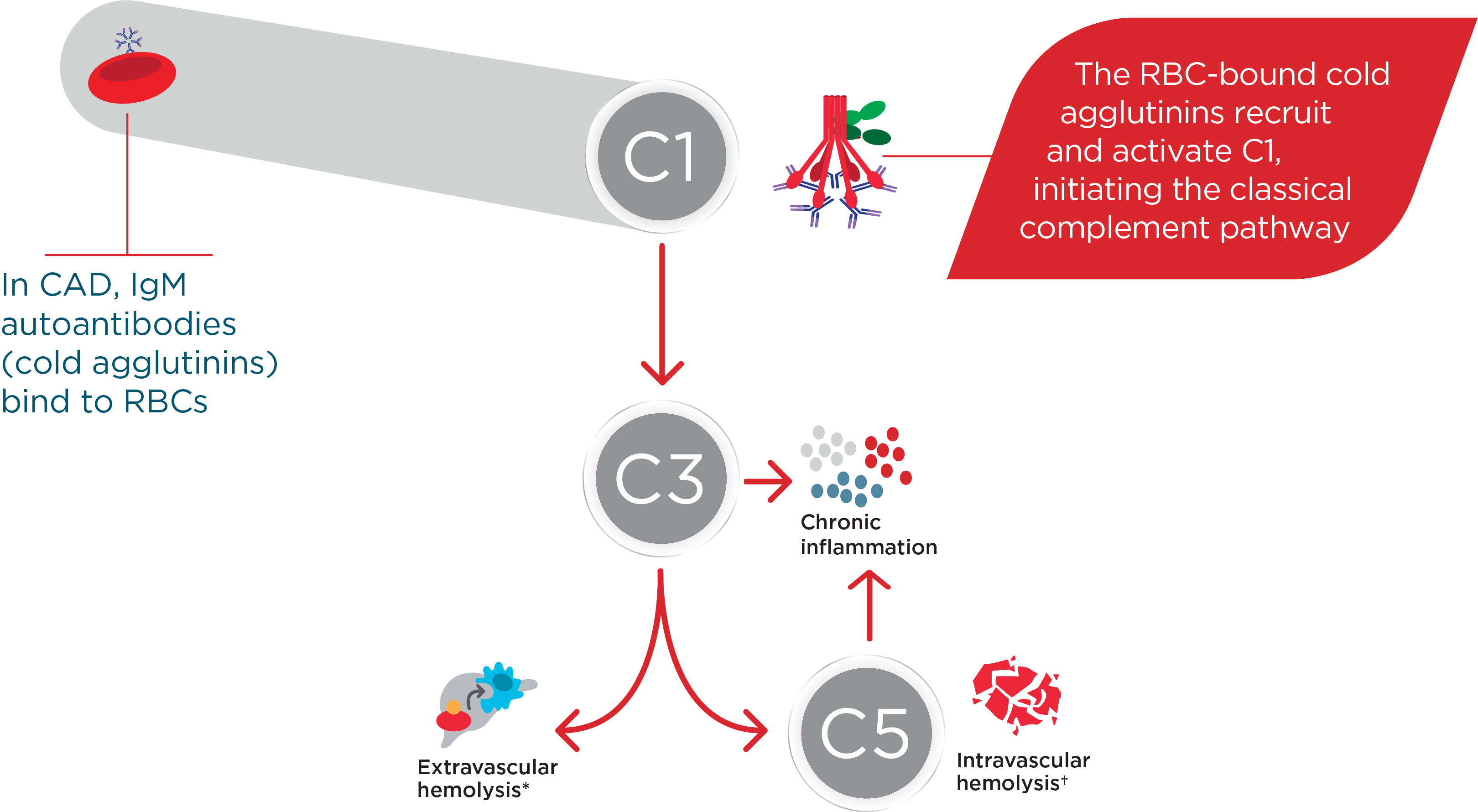
Mechanism Of Cold Agglutinin Disease Cad In The Complement Pathway

Autoimmune Hemolytic Anemias Nejm

Cold Agglutinin Mediated Autoimmune Hemolytic Anemia Semantic Scholar
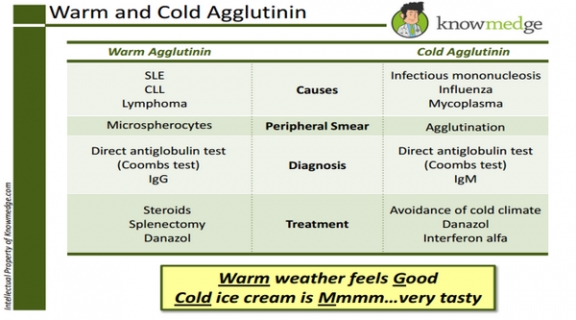
Abim Exam Question Flashcards Hematology Flashcard 2888
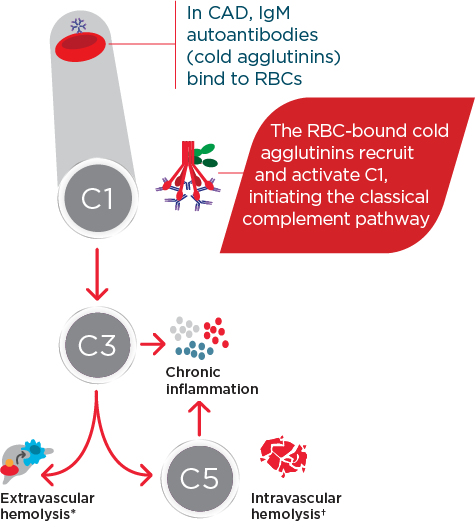
Mechanism Of Cold Agglutinin Disease Cad In The Complement Pathway
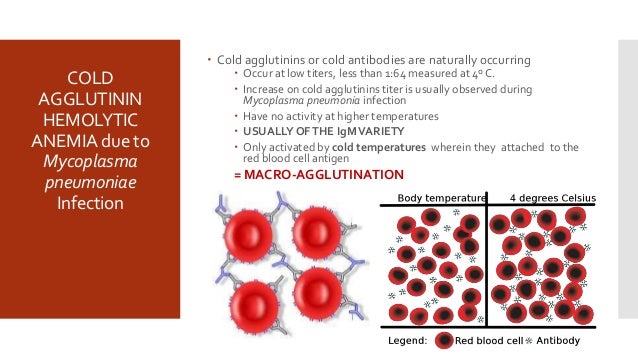
Villaester Hanisha Cold Agglutinin Hemolytic Anemia

Frontiers New Insights In The Pathogenesis And Therapy Of Cold Agglutinin Mediated Autoimmune Hemolytic Anemia Immunology
